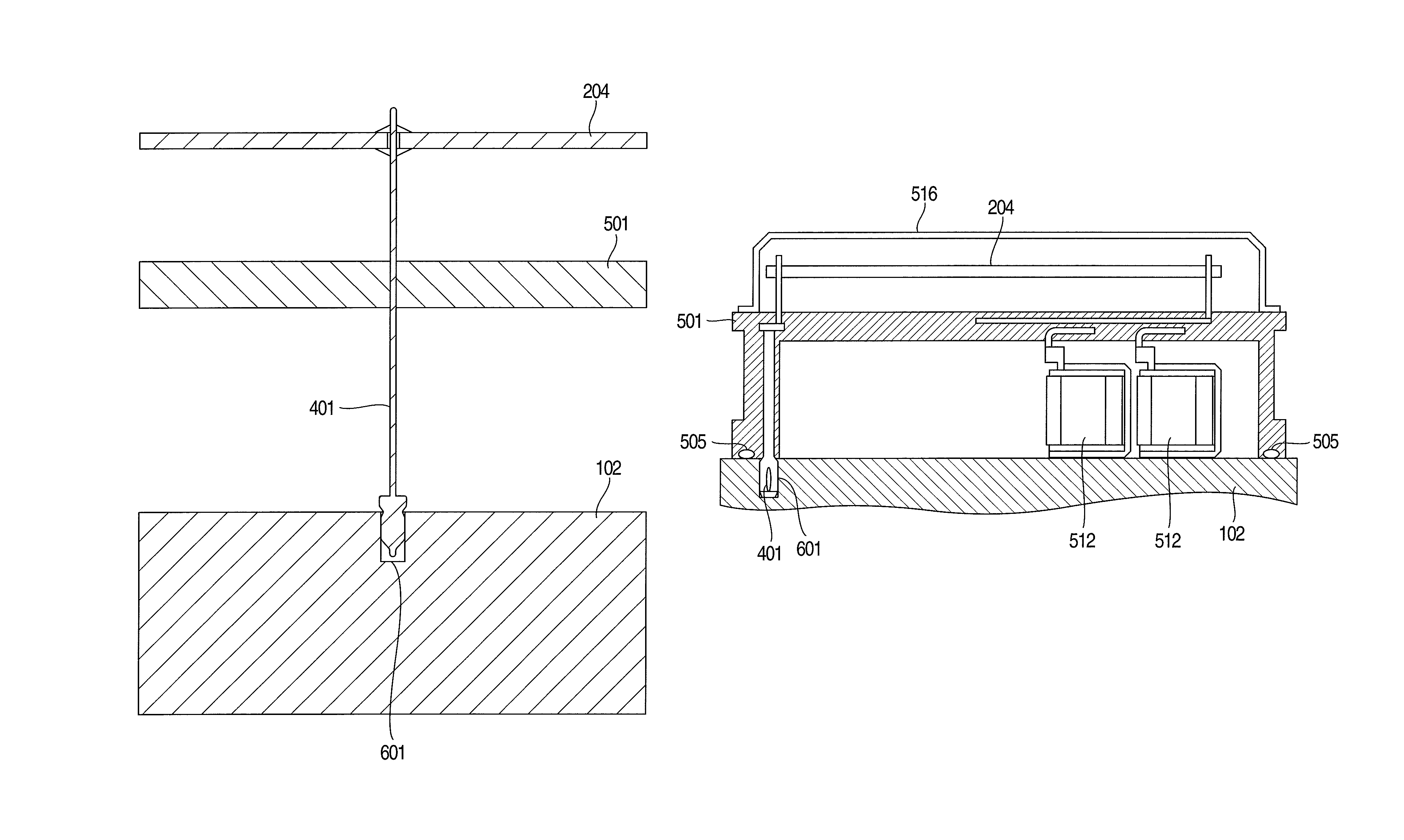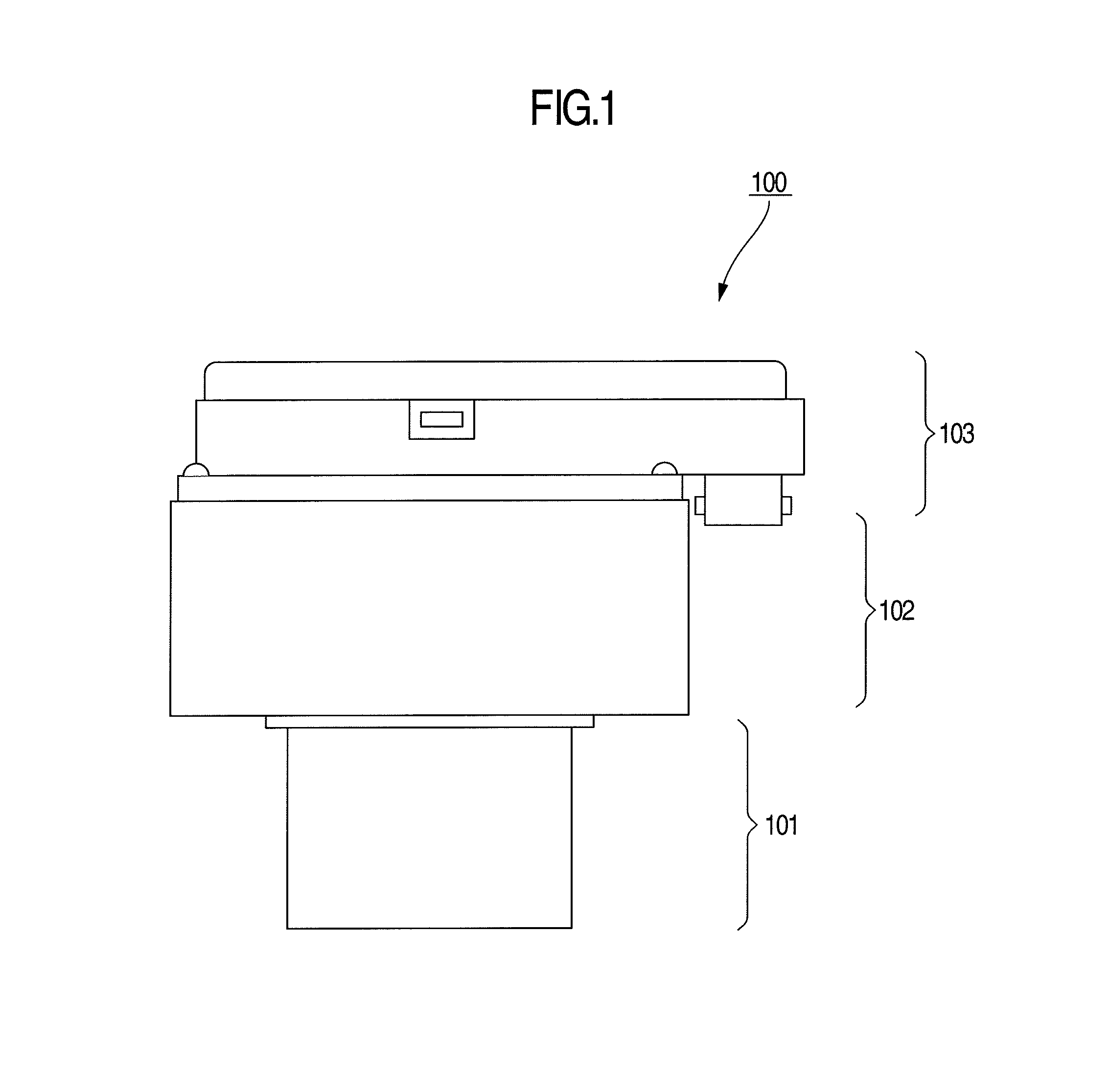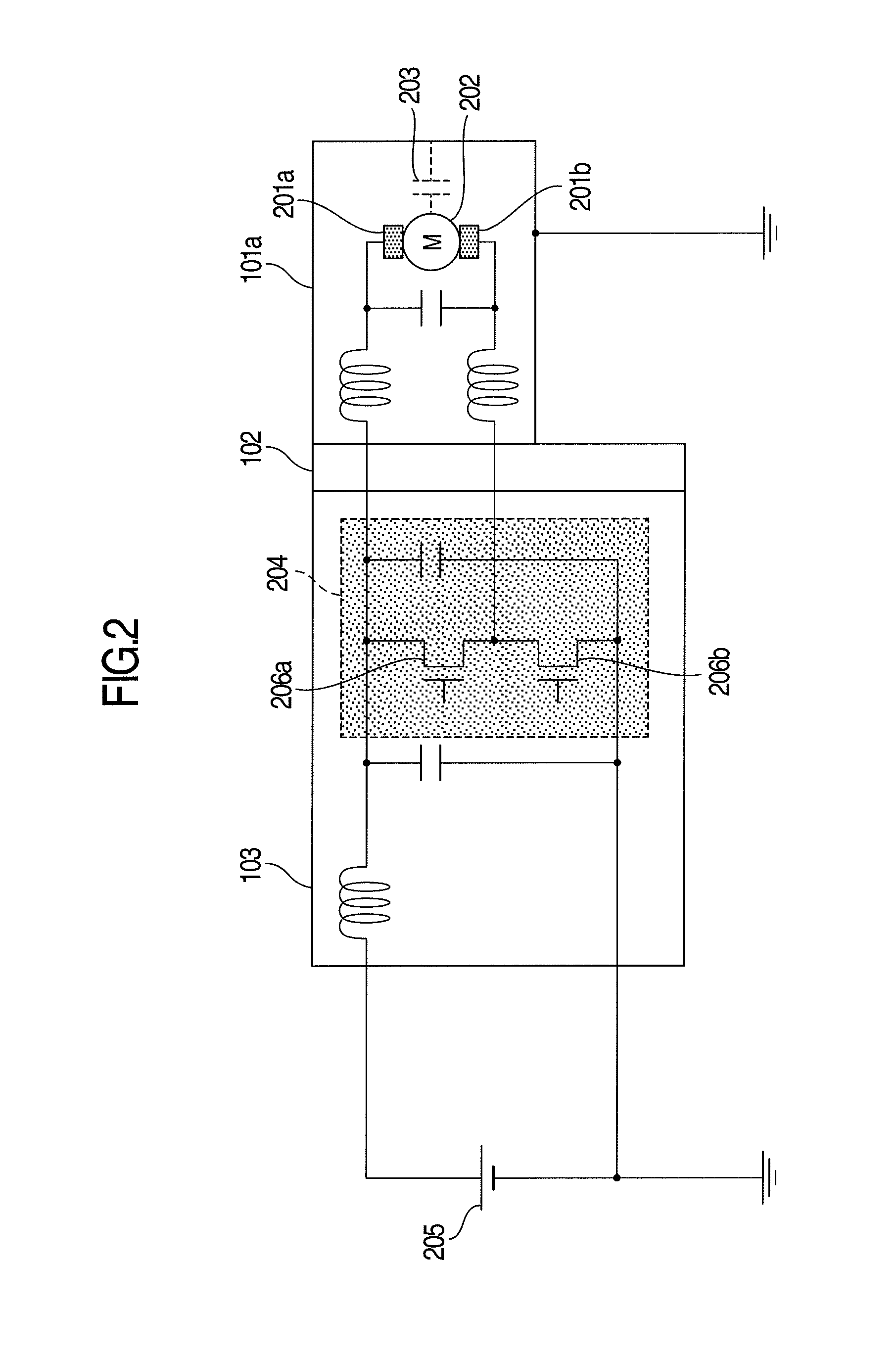Electric brake control apparatus
a technology of electric brakes and control apparatuses, which is applied in the direction of braking systems, contact material materials, transportation and packaging, etc., can solve the problems of avoiding unnecessary application of mechanical loads to components that configure electronic devices, reducing the reliability of electric brake control devices, and preventing noise from leaking out of electronic devices. , to achieve the effect of improving the reliability of electric brake control apparatuses, preventing adverse effects, and preventing noise from leaking
- Summary
- Abstract
- Description
- Claims
- Application Information
AI Technical Summary
Benefits of technology
Problems solved by technology
Method used
Image
Examples
embodiment 1
[0033]In this embodiment, description is made by exemplifying an ESC apparatus as an electric brake control apparatus. As shown in FIG. 1, the ESC apparatus 100 generally includes three units, which are a motor 101; a hydraulic unit (HU) 102 that utilizes rotational movement of the motor to generate a hydraulic pressure and determines a transmission path of the hydraulic pressure by opening and closing an electromagnetic valve; and an electronic control unit (ECU) 103 that includes a printed circuit board (PCB) for drive control of the motor and control of opening and closing the electromagnetic valve. The ESC apparatus 100 of the present invention has a configuration that connects the motor 101 to the electronic control unit via the hydraulic unit 102.
[0034]FIG. 2 is a diagram showing a conventional ESC apparatus in an equivalent circuit. A motor driving circuit in the case of adopting a DC motor as the motor of the ESC apparatus and adopting a battery 205 as a power source is repr...
embodiment 2
[0059]FIG. 7 is a sectional view of the structure of a part connecting, to the HU 102, of the conductor 401 that electrically connects the housing 101a of the DC motor of the ESC apparatus to the ground of the PCB 204 in Embodiment 2.
[0060]A structure is adopted where a structural member including the conductor 401 is fitted into the hole 601 formed in the HU 102. The structural member including the conductor 401 fixes this conductor 401 to the resin case 501 of the ECU. The conductor 401 is fixed at the part where the conductor 401 is connected to the PCB 204 on both of the upper and rear surfaces of the PCB 204. Portions other than the distal end on the side where the conductor 401 is connected to the HU 102 are covered with the resin of the resin case 501 of the ECU. It is sufficient that only a part required to plug the hole formed in the HU 102 is covered with resin. Accordingly, abrasion dust caused by friction between the conductor 401 and the HU 102 can be prevented from bei...
embodiment 3
[0065]FIG. 9 is a sectional view of an example of an ESC apparatus of Embodiment 3 of the present invention. A position where the conductor 401 is connected to the ground of the PCB 204 is disposed at a peripheral part of the PCB 204. A structure is adopted that allows a structural member including the conductor 401 is fitted into the hole 601 formed in the HU 102. A portion forming a part of the resin case 501 of the ECU and the conductor 401 function as a plug for the hole.
[0066]In this embodiment, a shape equivalent to the shape shown in FIG. 8 is adopted. A deformable portion is formed at the distal end of the conductor 401; the portion is deformed when the conductor 401 is inserted into the HU 102.
[0067]In order to avoid providing a position where the conductor 401 is newly inserted on a side of the resin case 501 of the ECU facing the HU 102, the conductor 401 can be inserted into a structural member having already been provided; for instance, a pin for spatial alignment betwe...
PUM
 Login to View More
Login to View More Abstract
Description
Claims
Application Information
 Login to View More
Login to View More - R&D
- Intellectual Property
- Life Sciences
- Materials
- Tech Scout
- Unparalleled Data Quality
- Higher Quality Content
- 60% Fewer Hallucinations
Browse by: Latest US Patents, China's latest patents, Technical Efficacy Thesaurus, Application Domain, Technology Topic, Popular Technical Reports.
© 2025 PatSnap. All rights reserved.Legal|Privacy policy|Modern Slavery Act Transparency Statement|Sitemap|About US| Contact US: help@patsnap.com



